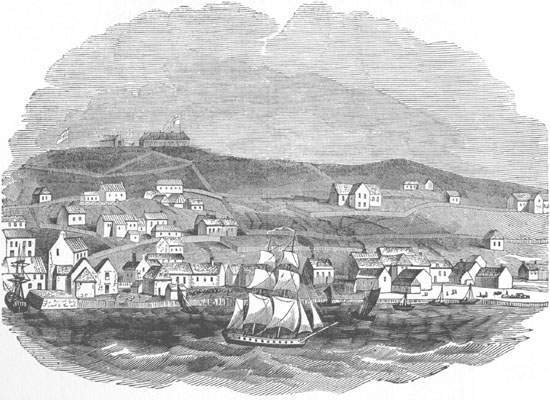Garrison Life in the 18th Century
Page 1
If the garrisons and fortifications had questionable significance in protecting the fishery against assault, they did play an important role in Newfoundland's transition from fishery to colony. Though small, the garrisons at St. John's and Placentia were important components of the local communities.
Size of Garrisons
The size of these garrisons varied, sometimes increasing to 200-300 men in time of war (eg., 1757, 1778), only to fall back to a few dozen or so in times of peace. After 1763, the Newfoundland garrison at Placentia and (mostly at) St. John's consisted of three companies of a regiment whose main body was stationed in Nova Scotia. There was also a detachment of artillery. Theoretically, this meant about 300 officers and enlisted men, but peacetime establishments were rarely at full strength. The actual number might therefore be barely half that, or about 150 men.
This was not an insignificant number. The men were present all year 'round, at a time when the permanent population of the communities in which they were stationed was quite modest. St. John's had a permanent core of about 1,000 residents during the 1760s. Moreover, the soldiers often had wives and children, so that the actual contribution of the garrison to the local population was greater than indicated by the military records.

From the Illustrated London News May 11, 1844, after a painting by Captain E.P. Brenton.
Colonel Gledhill, the commandant at Placentia from 1719 to 1729, had a wife and eight children, of whom three were born at Placentia. The detachment of the Royal Highland Emigrants at St. John's in 1777 had 20 women and 35 children. Some garrison families lived within the fortifications, but many more lived in the town and needed housing. When the men of the 65th Regiment were suddenly transferred to Boston in 1775, they left several women and children behind who had to be cared for at public expense.
A Typical Soldier
The soldiers who served in Newfoundland were fairly typical in their background. Army recruits were drawn largely from the ranks of unskilled labourers, and many were Irish. Even by the standards of the day, the quality of these soldiers was often unsatisfactory. Sometimes the men sent to Newfoundland were castoffs from the parent regiment. For instance, the soldiers of the Royal Highland Emigrants who served in Newfoundland during the American Revolutionary period were described by a senior officer as "the worst we could find in the Battalion ..., so that we can say with a great deal of truth [that] they were picked men..." (Janzen, 1983, 160). Governor Montagu complained that "these People have not added any Strength to the Garrison, as they are, in general, Old, infirm and undiciplined [sic] .... either Men past Sixty or Boys not Sixteen" (CO 194/33: 6-6v).




